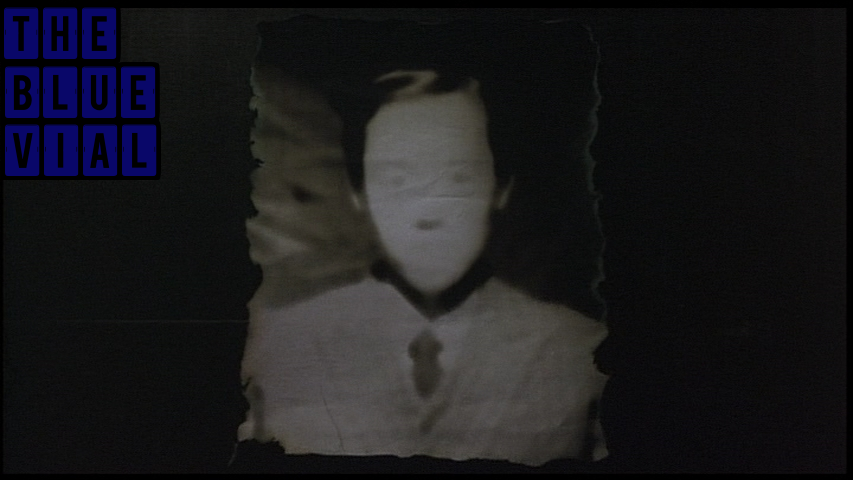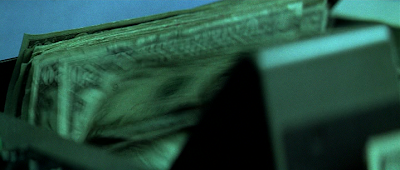
My familiarity with Iranian cinema pretty much begins and ends with the great Abbas Kiarostami, and though I've only begun to explore his work in the past year or so, he currently stands as one of my very favorite working filmmakers. The Kiarostami film that has arguably had the greatest impact on me and the one many call his masterpiece, 1990's Close-Up, is a fiction-documentary hybrid dealing with an unemployed cinema-obsessed man by the name of Ali Sabzian who, with motivations that remain murky, dupes a family into believing that he is filmmaker Mohsen Makhmalbaf, with Makhmalbaf himself making an appearance during the film's remarkably touching climax. Makhmalbaf's career and vast influence in Iranian film culture is touched on quite a bit in the wonderful commentary from Mehrnaz Saeed-Vafa and Jonathan Rosenbaum that accompanies the Criterion release of the film, and it got me quite curious to delve into the man's work at some point. And what better opportunity to do so than for this blogathon, with the film of his I selected being 1998's The Silence.
The opening scenes of The Silence ease us into the world of a blind Tajik boy named Khorshid (Tahmineh Normativa) who lives in a small apartment with his mother (Goibibi Ziadolahyeva) and works in a nearby town as a lute tuner for an old man's music shop. As we are introduced to him, Tajik sits alone in his room listening intently to the buzzing of a bee trapped inside a glass jar, and prays for the goodwill of the insect before letting it free. There is a rapping at the door from the landlord, bringing bad news that the mother has five days time to pay the rent or she and her son will be thrown out. And so Khorshid's job, which he is quite good at, becomes more critical than ever, but getting him to the music shop, as we come to find out, is a whole task unto itself. Khorshid is reliant on the help of a slightly older girl, Nadereh (Nadereh Abdelahyeva), to get him to and from the bus terminal, however his world is one of such intense textural and aural pleasure that something as simple as a pretty voice or instrument will capture him and lead him astray from his route, often making him late for work and putting his job in increasing jeopardy. On the first morning after the news of possible eviction, such an incident occurs when Khorshid becomes lost in a marketplace after hearing intoxicating music playing in the distance, and in a beautiful scene pitched with an overwhelming tenderness that will pervade throughout the movie, Nadereh searches for him by closing her eyes and allowing her other senses to take over, a poetic and instinctual act that eventually does lead her to the location of Khorshid.

Makhmalbaf has a real poet's eye for the sensual beauty of nature and its ambiance, and The Silence is rife with moments where this is on display. Perhaps the most striking among them occurs when Nadereh, having delivered the boy to his job, visits a nearby spring and accessorizes herself with pieces from the surrounding forest, taking a pair of cherries that share a stem and draping them over her ears as earrings, and mashing bits of colorful flower petals onto her nails, while the spring water shimmers in the foreground, reflecting the towering trees that surround. She then visits Khorshid in the shop with her new getup, performing a little dance as the boy tunes one of the horribly out of tune instruments, and the rhythm of Khorshid's strumming along with the hypnotic movements of the girl transforms the jangling discord of the unpleasant strings into something beautiful. This type of playful spontaneity is echoed in later scenes when Khorshid finds himself wandering through unfamiliar parts of the city, and instead of asking for directions, he asks the young children pounding pots for a living to pound them in a more rhythmic fashion, something which foreshadows the film's rapturous, orchestral climax. The theme of making malleable our everyday surrounding sounds into something more palpable and pleasurable is further highlighted in a scene where Khorshid rides a young boy's wooden pushcart to follow a musician he has heard on the bus, and Makhmalbaf, as he is prone to do, plunges us into the subjective world of Khorshid. He takes in all of the sounds of the street - the wooden clanking of the cart wheels, the young boy's panting breath, the passing horses and their clapping, and the passing automobiles - and swirls them together, forming a grandly enchanting contrapuntal orchestra being played out right in the middle of the road for anyone who so chooses to tune in.
The loving attention to detail in scenes like those is remarkable, and Makhmalbaf even extends this sentiment towards the supporting characters in the movie as well. If only through brief snatches of dialogue, Makhmalbaf fleshes out his minor players with backgrounds that shade the spare story with complexities, such as in a late scene with the mother, who up until now had only popped in the story briefly to tell Khorshid when the money is due, where she shares with a friend the situation surrounding her son's father's departure from the family, and why the pair are so strapped for cash. There is also a moment when we learn that the old man who owns the music shop had a son who was killed in war, which could go some ways towards explaining his cranky spirit, one that eventually leads to the firing of Khorshid. But despite the fact that Khorshid does get fired, and that the family's bleakly depicted condition doesn't appear to be on the upswing by the end, The Silence is a movie that nevertheless teems with hope and vitality. It's a loving, gentle, sensuous ode to life, one that depicts a world experienced through the prism of an interaction with and a passion for both music and the natural world. It was a wonderful introduction for me to Makhmalbaf's work, and I look forward to further exploring the films of this important and exciting director.













































